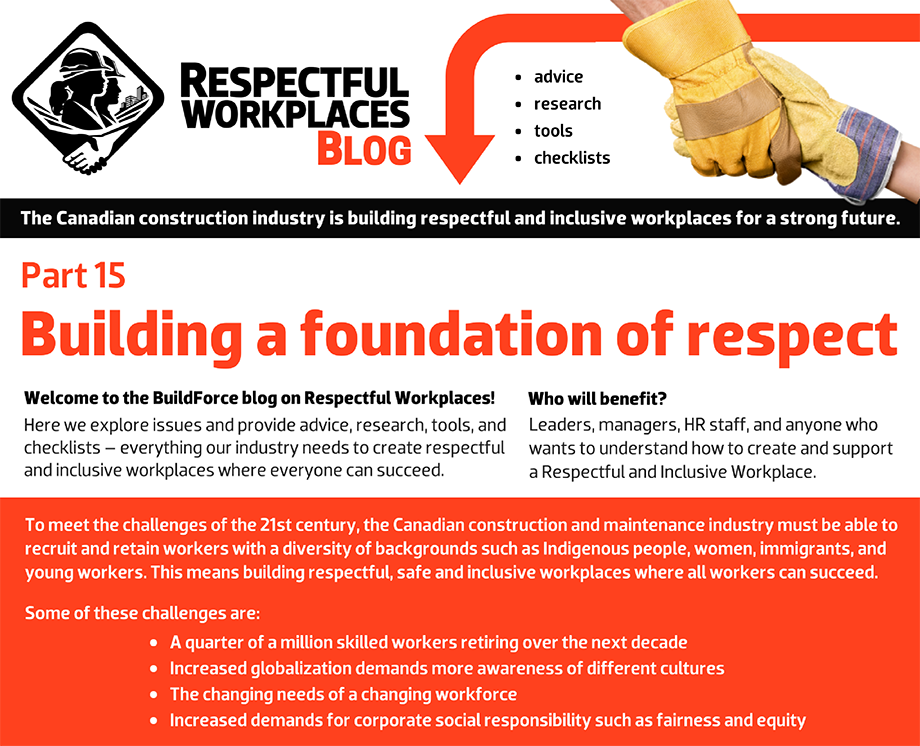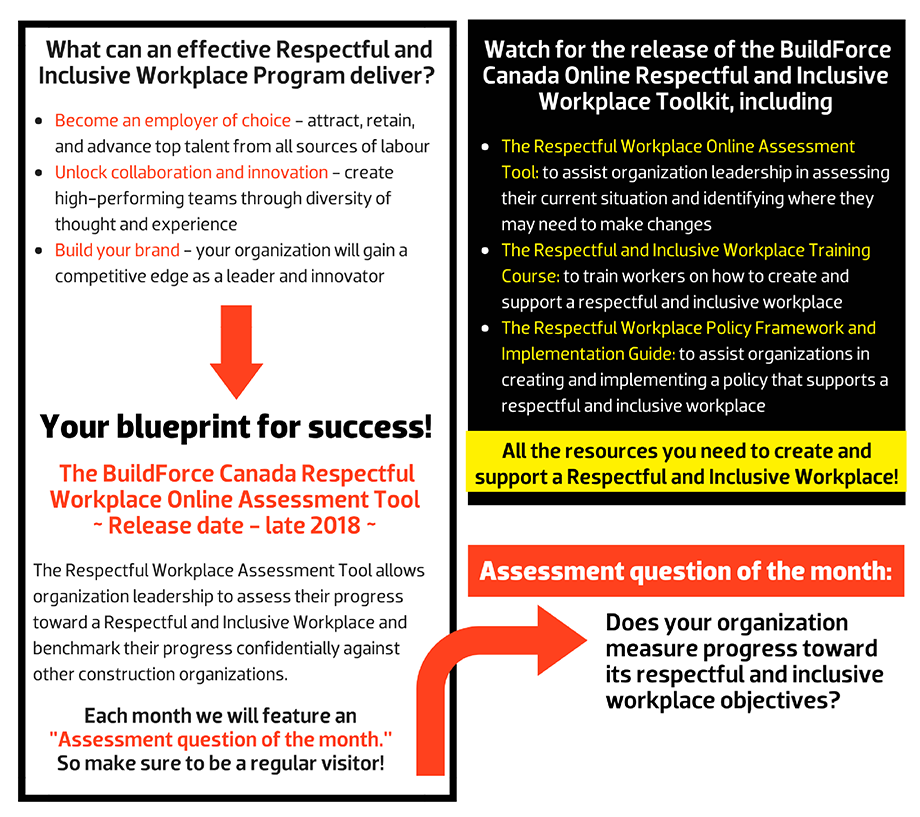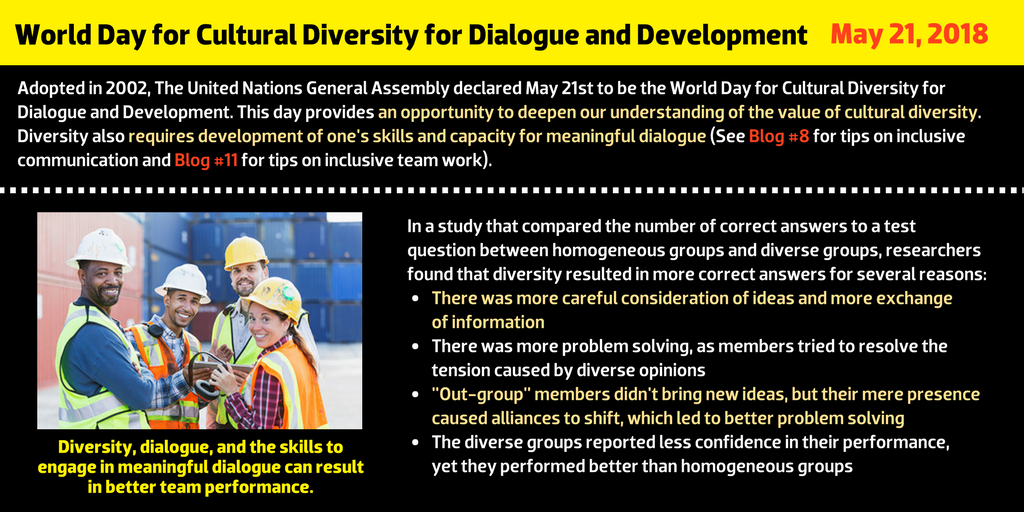

We cannot improve what we do not measure.
It's important to know how respect and inclusion can influence your organization's performance. For example, respect and inclusion efforts can affect turnover and retention generally in the workforce and specifically among different demographic groups. An organization, therefore, must know the baseline levels of turnover and retention segmented by demographic group, and understand the costs associated with each measure.
Examples of Quantitative Measures are:
- employee turnover rates
- hours worked
- time to complete apprenticeship
Examples of Qualitative Measures are:
- employee levels of job satisfaction
- changes in attitude before and after respect and inclusion training
- the company's image among job applicants
Resources:
- BuildForce Canada. Online Respect & Inclusion Toolkit. Release date - late 2018.
- Liljenquist, Katie and Williams Phillips, Katherine and Neale, Margaret, The Pain is Worth the Gain: The Advantages and Liabilities of Agreeing with Socially Distinct Newcomers. 16th Annual IACM Conference Melbourne, Australia. Available at SSRN: https://ssrn.com/abstract=402081. Accessed February 25, 2018.


This project has been funded by Status of Women Canada.



